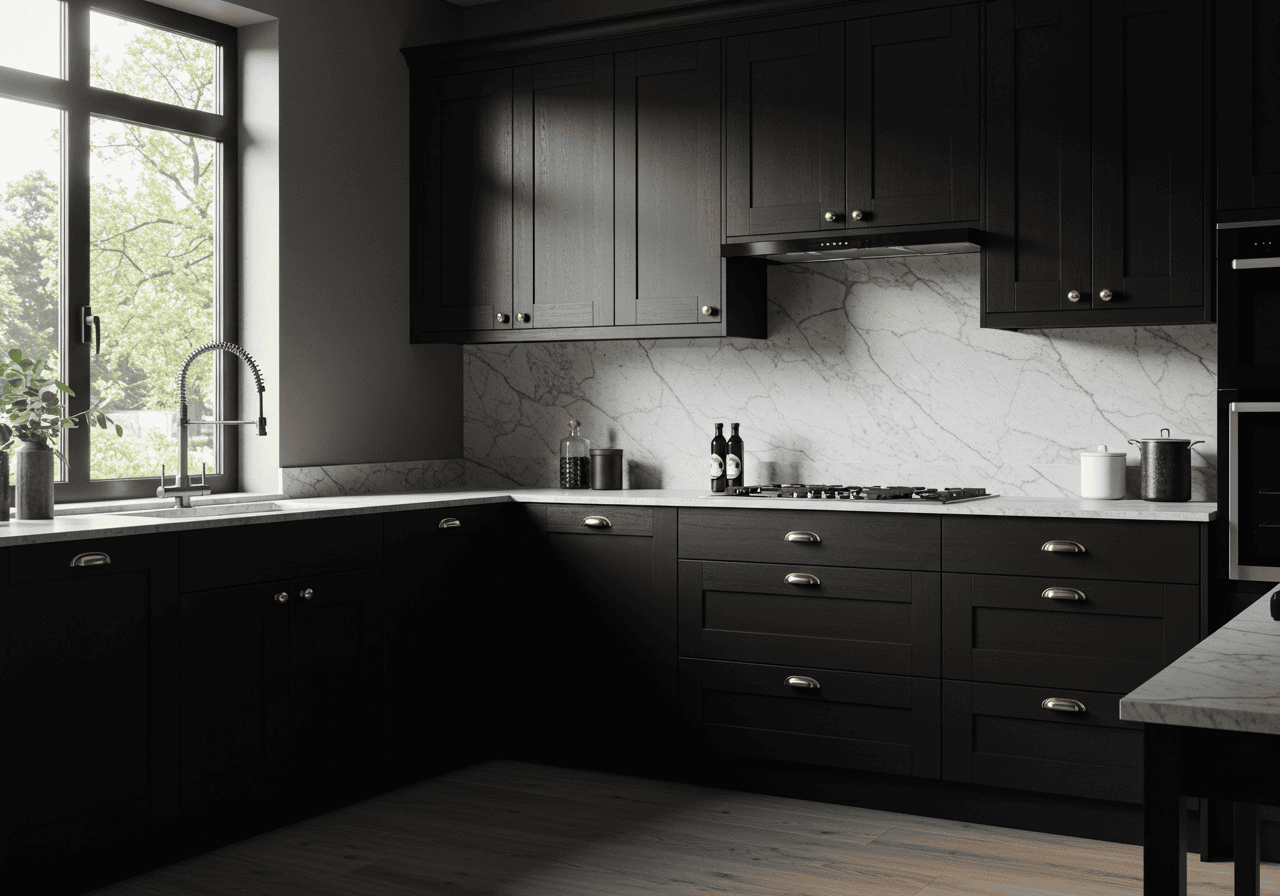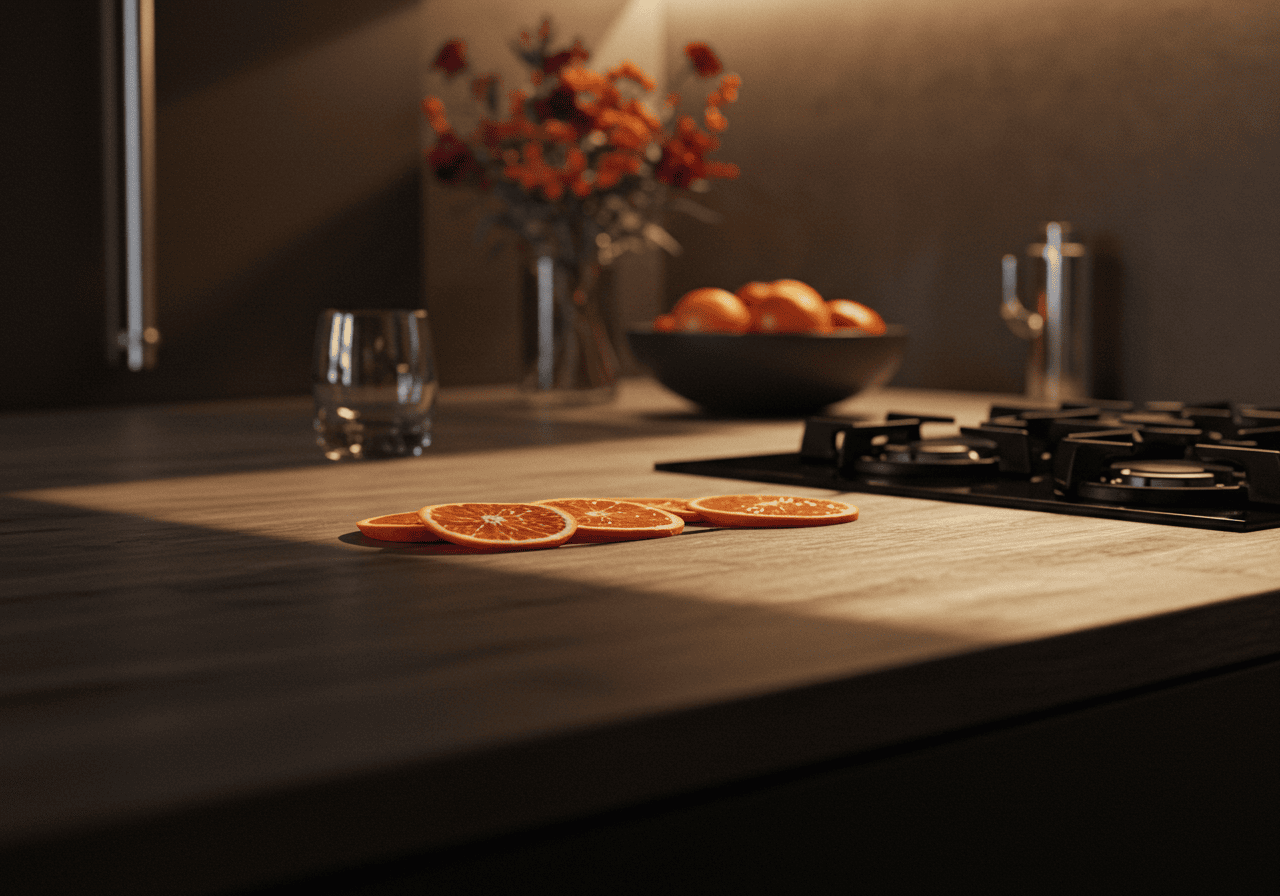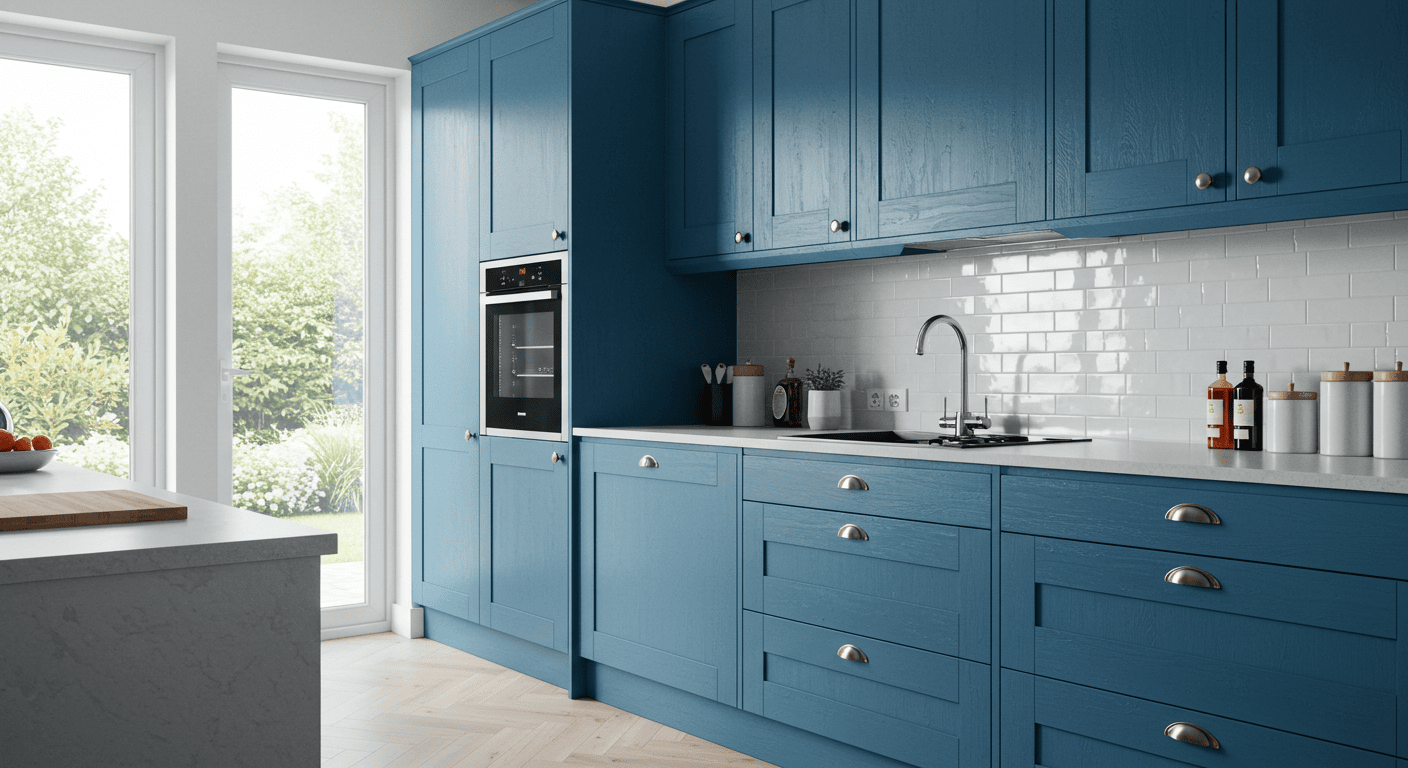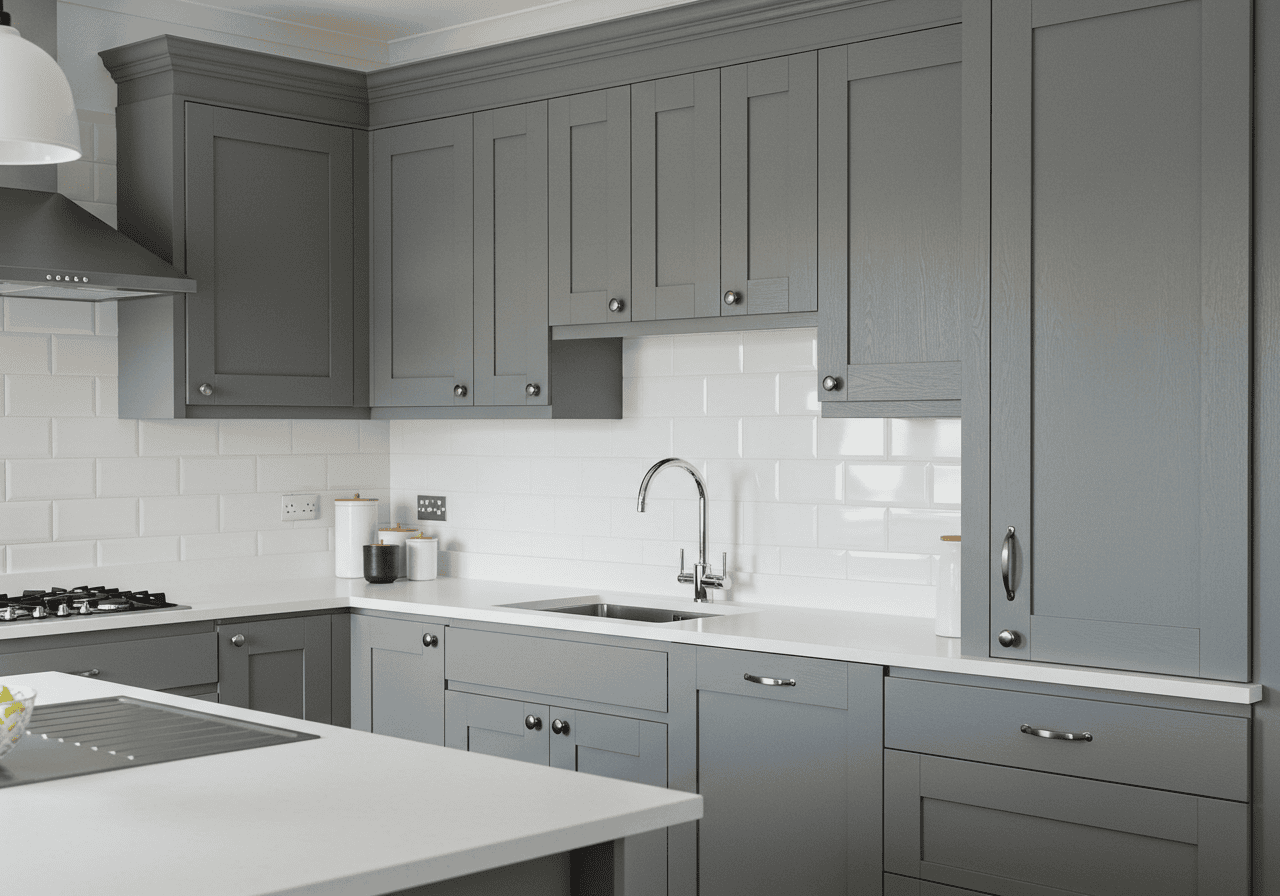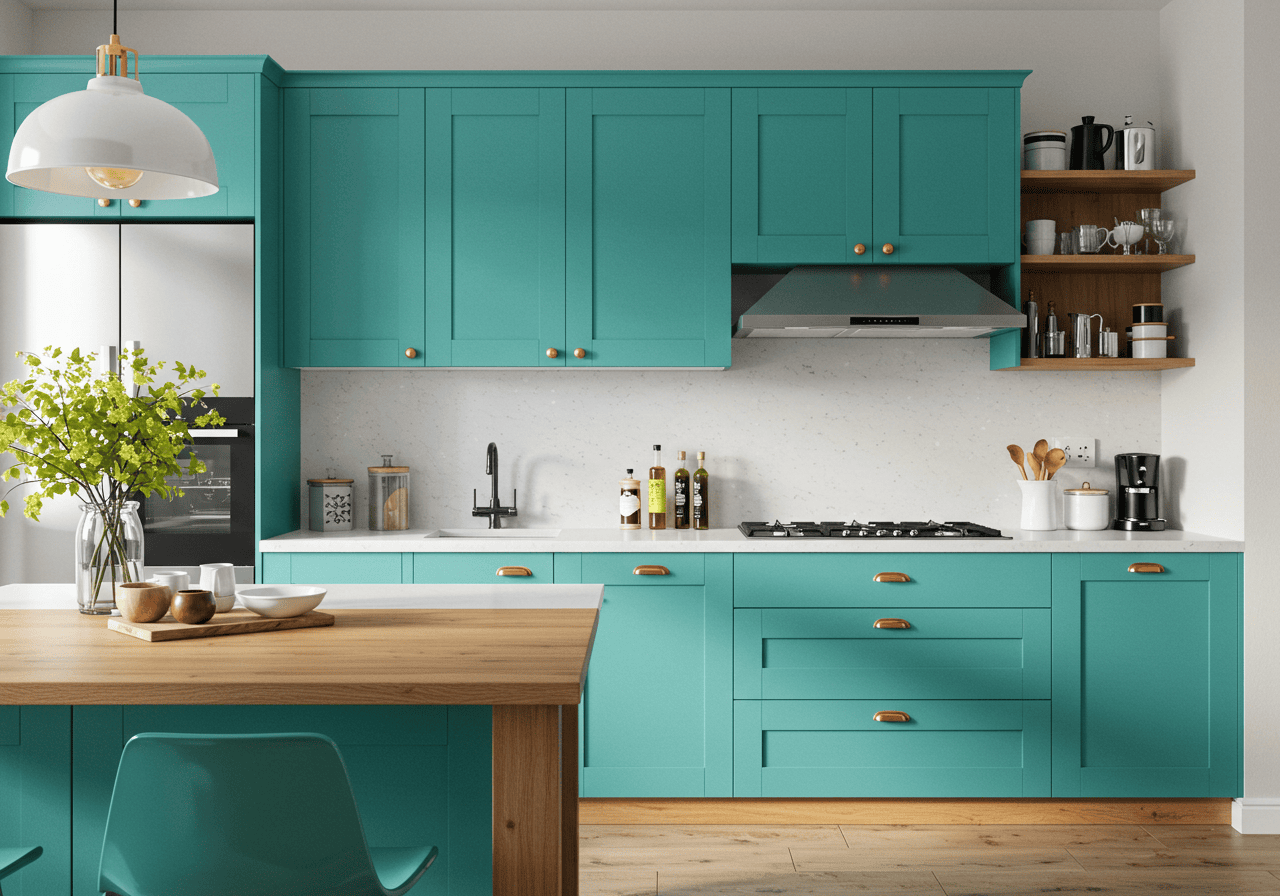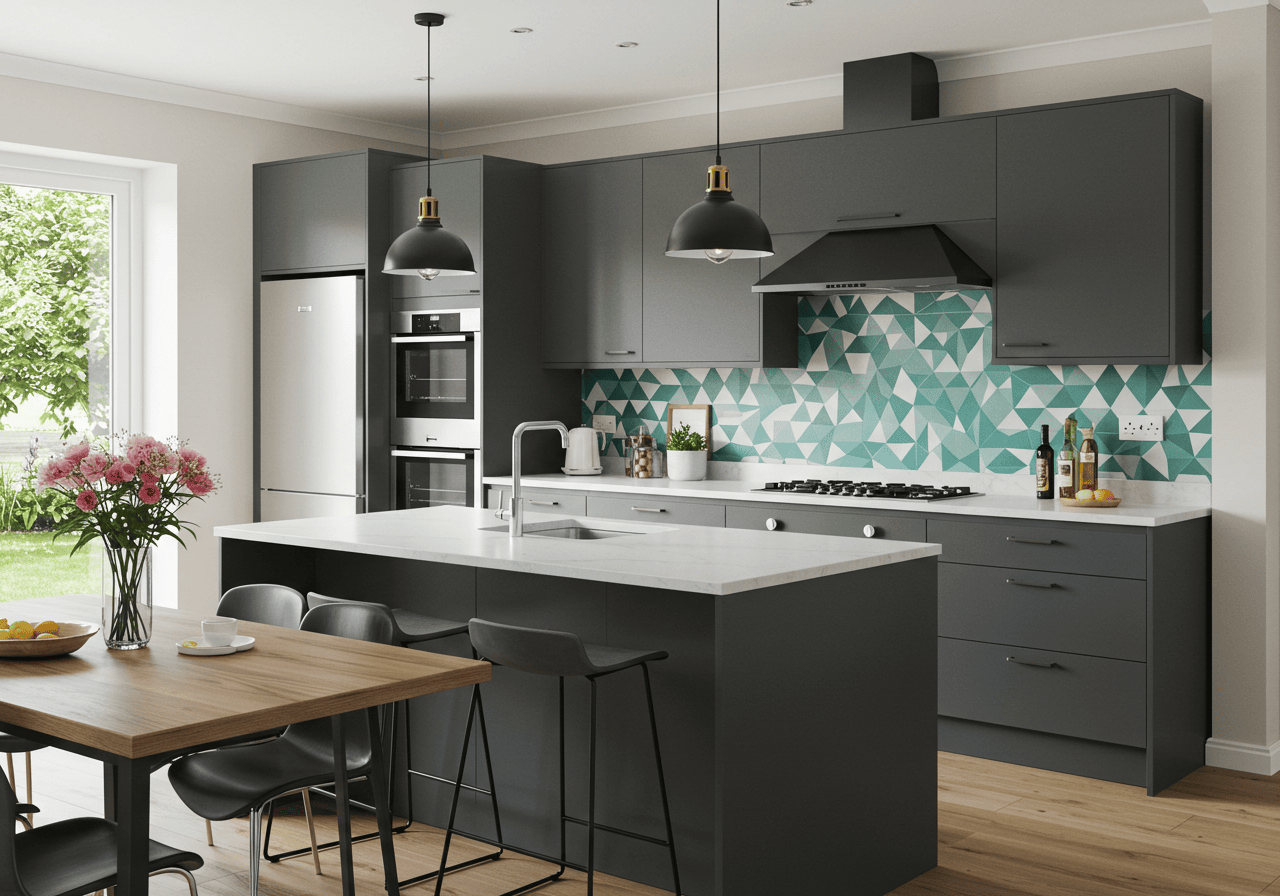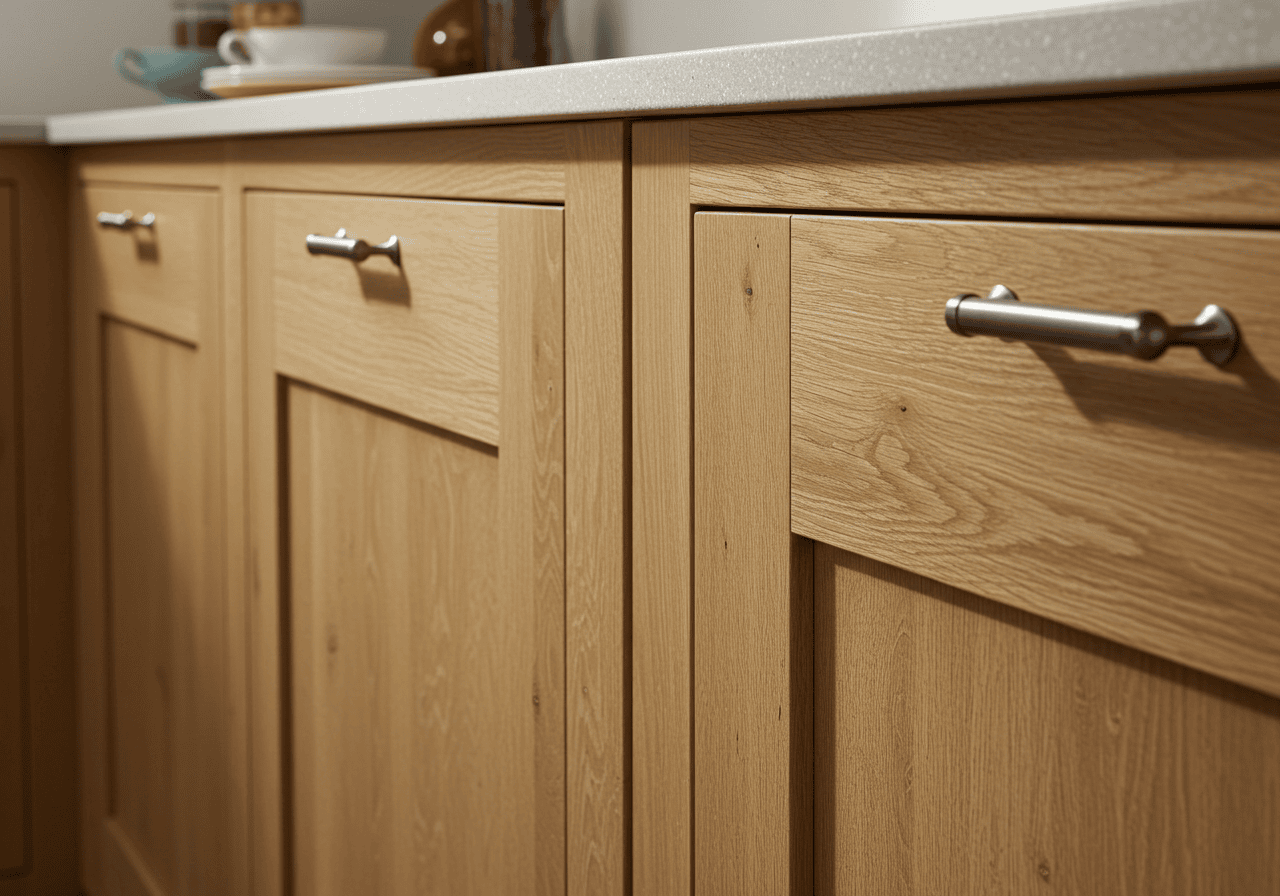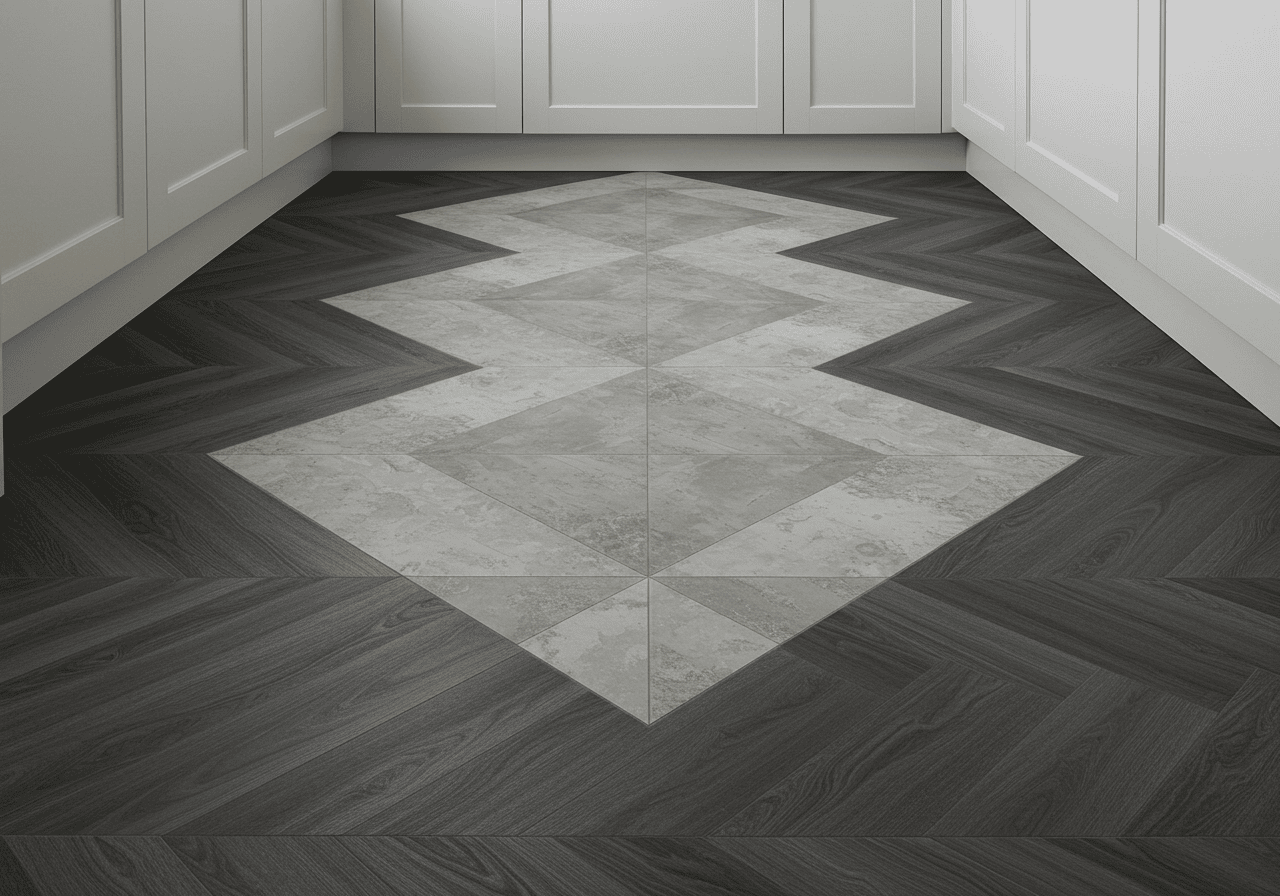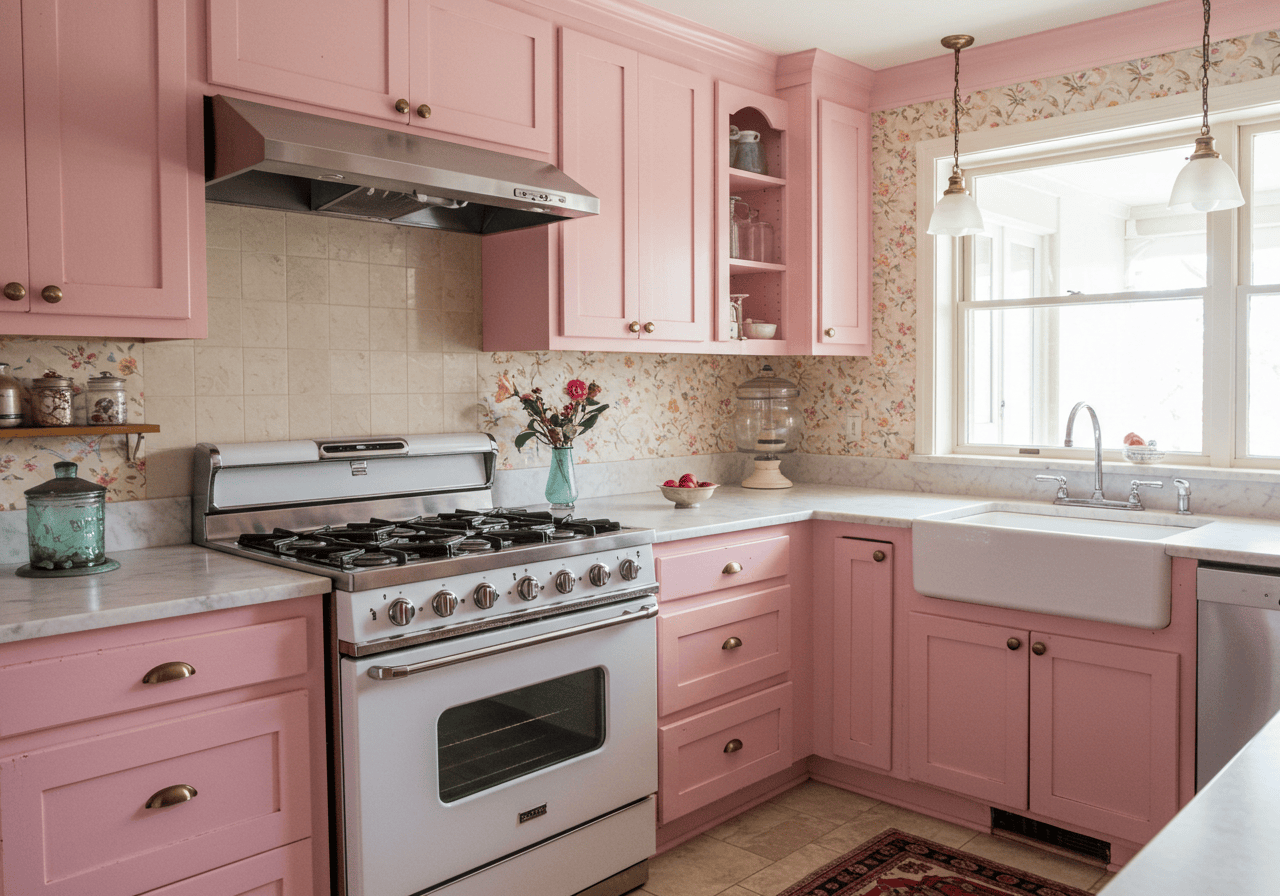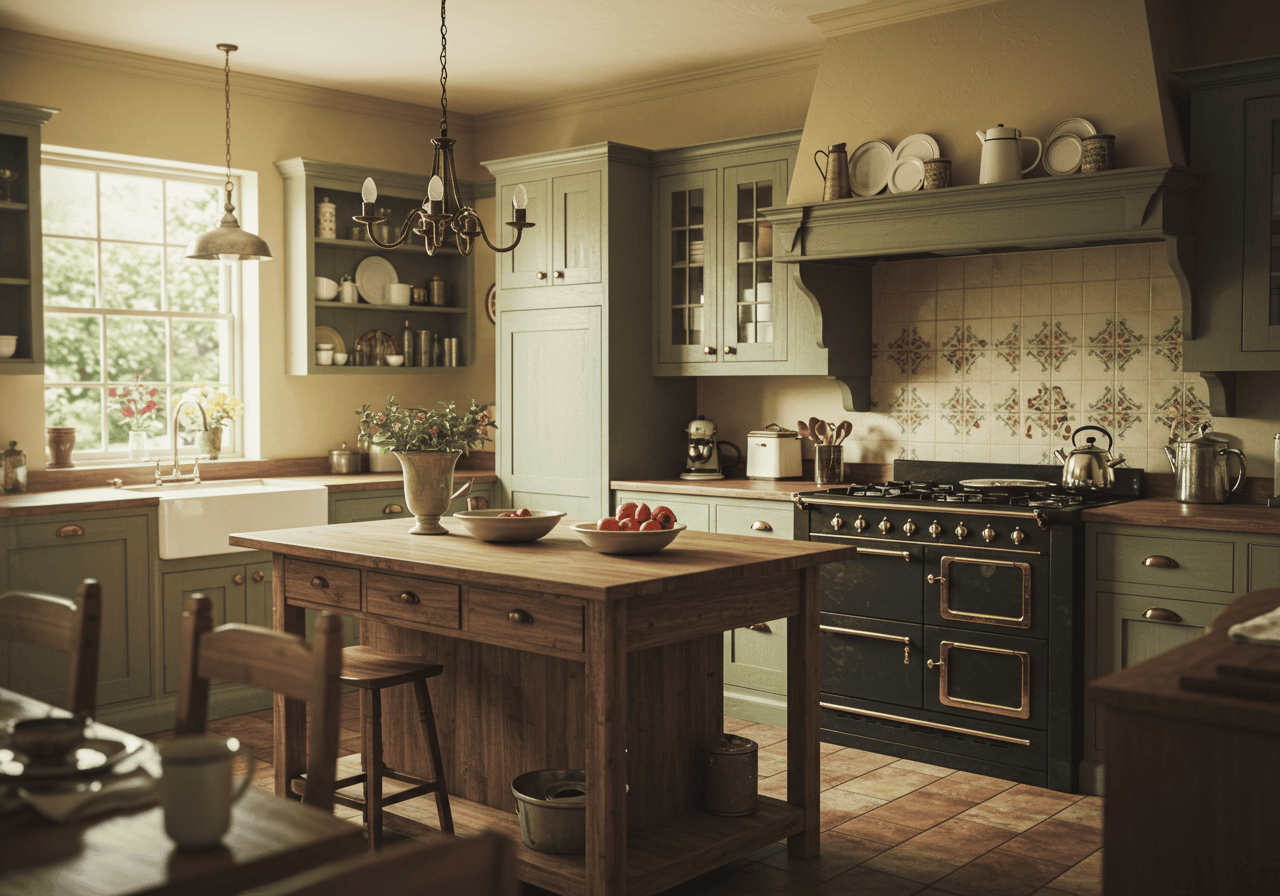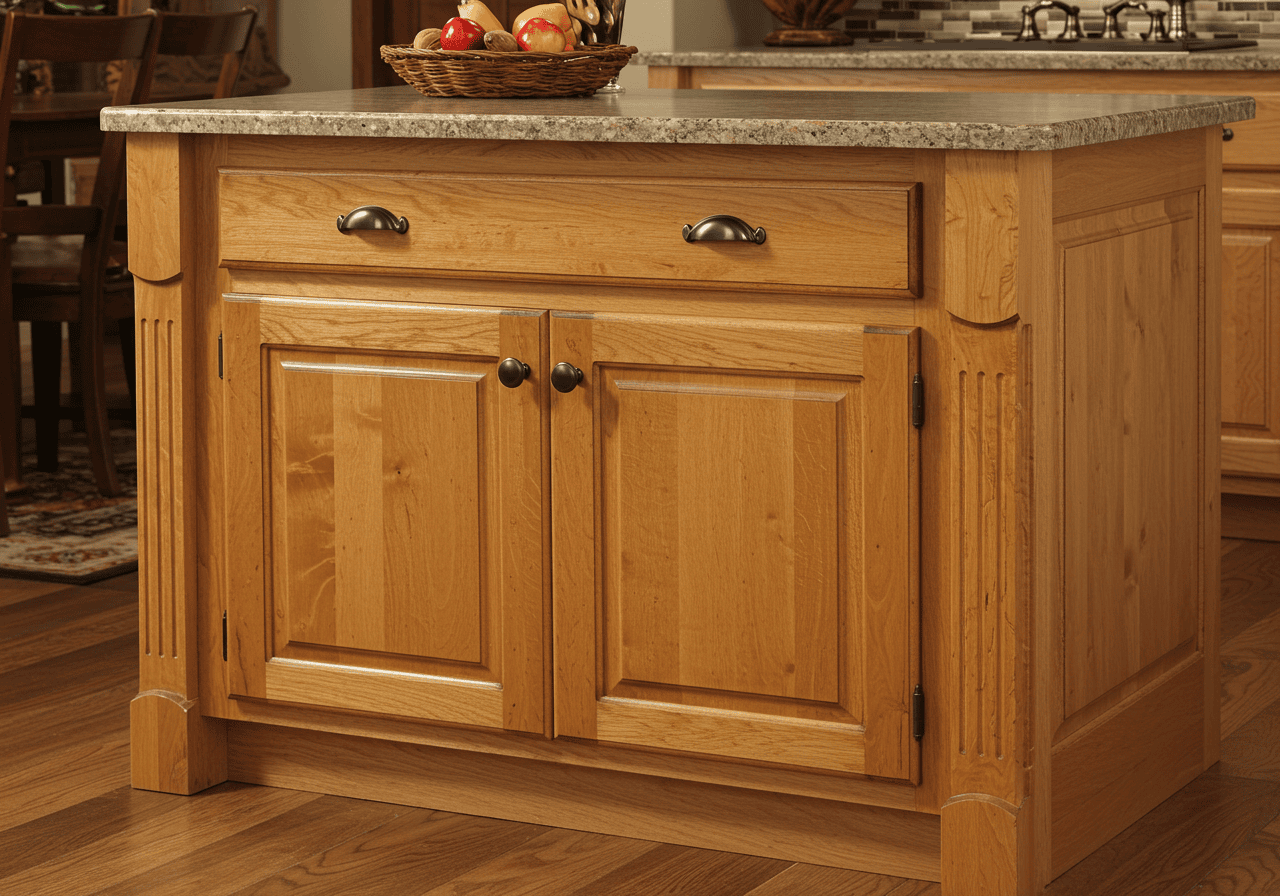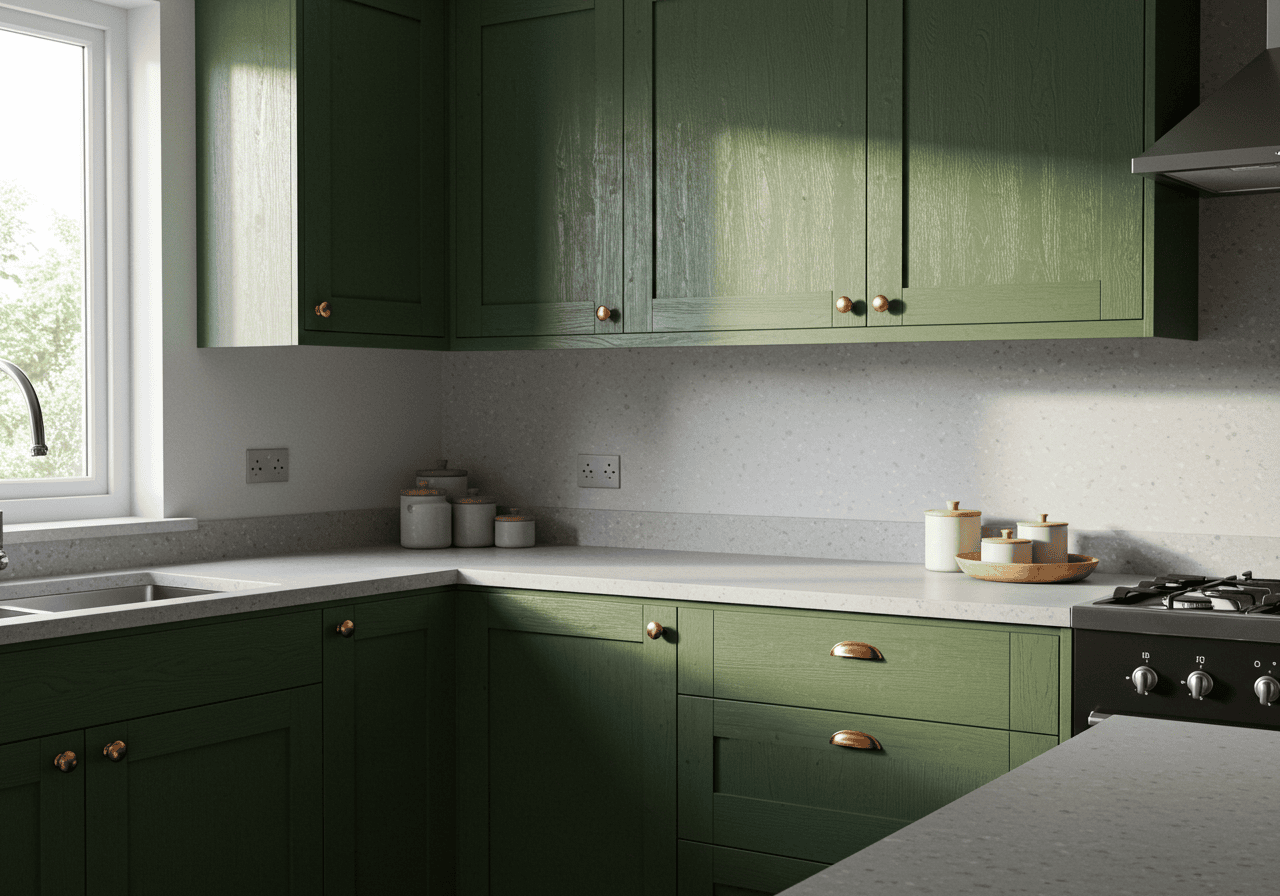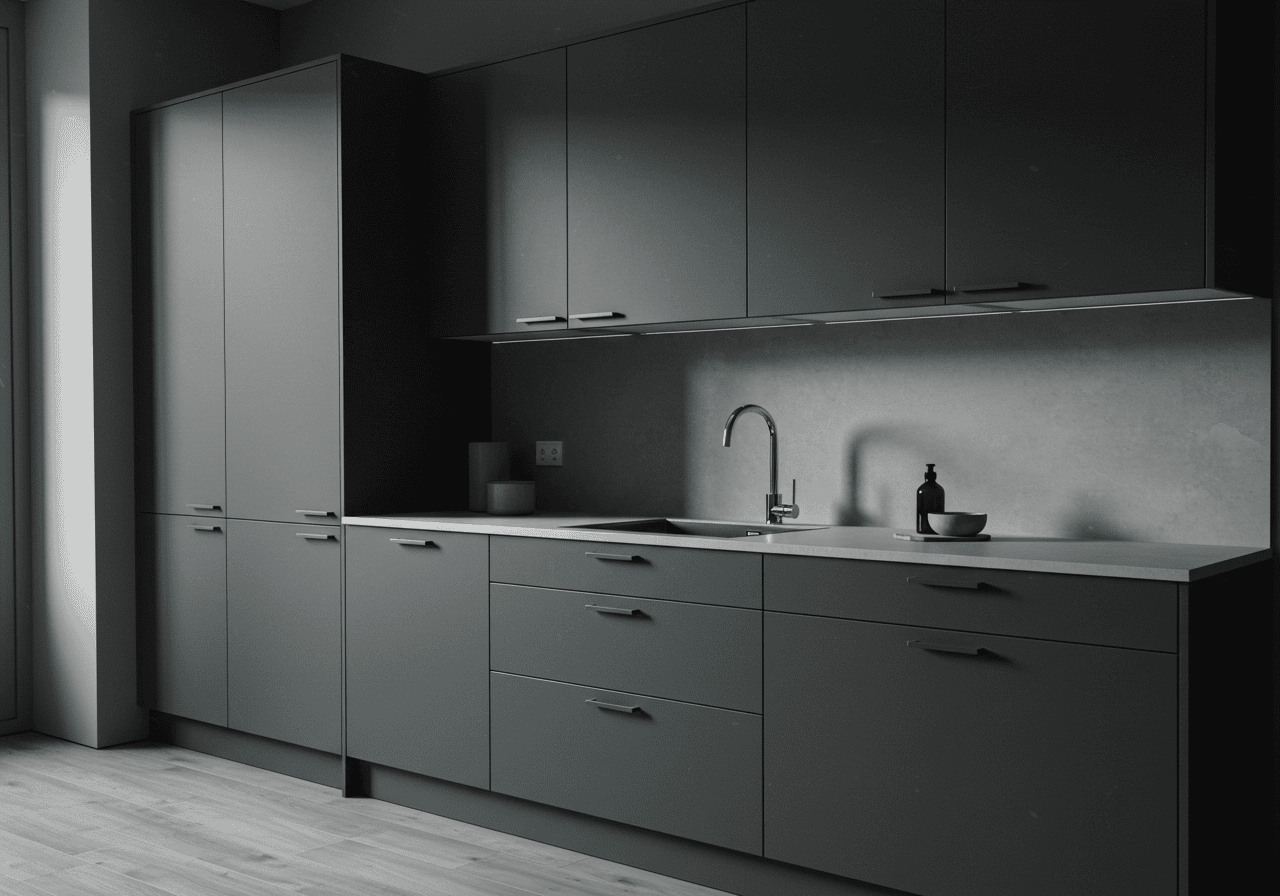Hey there, design lovers! Ever feel a pang of nostalgia for the good ol’ days? Maybe you binge-watch shows set in the 50s, 60s, or 70s and find yourself swooning over the kitchens? Well, you’re not alone! Retro kitchens are making a huge comeback, and for good reason. They’re bursting with personality, playful colors, and a unique charm that feels both comforting and excitingly different.
Forget sterile, cookie-cutter designs. A retro kitchen is all about expressing yourself and creating a space that’s fun, functional, and fabulously vintage-inspired. Whether you want a full-on time capsule or just a few nostalgic nods, we’ve gathered some groovy ideas to get you started. Ready to take a stylish step back in time? Let’s dive in!
1. Dive into Dreamy Pastels
Think back to the quintessential 1950s kitchen – what comes to mind? Chances are, it’s those soft, dreamy pastel shades! Mint green, baby blue, buttercup yellow, and cotton candy pink were all the rage, bringing a cheerful, optimistic vibe to the heart of the home.
- Why it works: Pastels instantly evoke a retro feel. They make the kitchen feel light, airy, and oh-so-sweet. Perfect for creating a welcoming atmosphere.
- Get the look: Consider pastel-colored appliances (a SMEG fridge is iconic!), painting your cabinets in a soft hue, or adding pops of pastel through accessories like canisters, stand mixers, or even dish towels. Balance with crisp white or light wood tones to keep it feeling fresh, not overwhelming.
2. Go Bold with Black and White Checkered Floors
Nothing screams “retro diner” or “classic vintage kitchen” quite like a bold checkered floor. This timeless pattern is instantly recognizable and adds a serious dose of graphic punch and vintage flair.
- Why it works: It’s a high-contrast, high-impact look that provides a fantastic foundation for various retro styles, from the 50s diner aesthetic to a more subdued mid-century vibe.
- Get the look: Classic black and white vinyl or ceramic tiles are the go-to. You can play with scale – larger checks for a modern twist, smaller for a more traditional feel. This flooring pairs exceptionally well with pops of cherry red, turquoise, or even sleek black kitchen cabinets for a moodier take. Check out more kitchen flooring ideas if you’re exploring options!
3. Peek Inside with Glass-Front Cabinets
Want to display your colorful vintage dishes but keep them protected from dust? Glass-front cabinets offer the perfect compromise between hidden storage and open shelving, adding depth and a touch of classic charm.
- Why it works: Glass fronts break up the visual solidity of rows of cabinets, making the kitchen feel lighter and more open. They provide an opportunity to showcase curated collections – think stacks of jadeite, colorful Fiestaware, or pretty patterned glassware – adding personality and reinforcing the retro theme.
- Get the look: Replace a few solid upper cabinet doors with glass-front versions. You can choose clear glass for a full display, frosted or ribbed glass for a more obscured, vintage look, or even glass with decorative mullions. Painting the interior of the cabinet a contrasting color can make your displayed items pop even more!
4. Embrace Sleek Mid-Century Modern Lines
If the kitschier side of retro isn’t quite your jam, lean into the sophisticated cool of Mid-Century Modern. This design movement (roughly 1945-1969) focused on clean lines, organic shapes, minimal ornamentation, and a connection between indoors and outdoors.
- Why it works: It’s a timelessly chic take on retro that blends beautifully with contemporary aesthetics. It feels both nostalgic and incredibly current.
- Get the look: Opt for flat-panel cabinet doors, perhaps in warm wood tones like teak or walnut (Hickory cabinets can also offer a warm, distinct grain). Look for furniture with tapered legs, geometric patterns in backsplashes or textiles, and iconic lighting fixtures like Sputnik chandeliers or globe pendants. Find more inspiration for kitchen decorating ideas that incorporate this sleek style.
5. Make a Statement with Retro Appliances
Perhaps the most iconic element of a retro kitchen is the appliances! Forget hidden fridges and integrated dishwashers – retro appliances are meant to be seen, often becoming the colorful centerpiece of the room.
- Why it works: Boldly colored, curvy appliances instantly set the tone and serve as a focal point. They inject personality and fun like nothing else.
- Get the look: Companies like SMEG, Big Chill, and Elmira Stove Works offer brand-new appliances with authentic retro styling in a rainbow of colors – think cherry red, turquoise, buttercup yellow, or even pink! Alternatively, hunt for genuine refurbished vintage appliances for ultimate authenticity (just ensure they’re energy-efficient and safe!).
6. Get Groovy with Avocado Green & Harvest Gold
Let’s talk about the signature colors of the late 60s and 70s: Avocado Green and Harvest Gold. While they might have fallen out of favor for a while, these earthy, warm tones are undeniably retro and can be used in surprisingly stylish ways today.
- Why it works: These colors instantly transport you to the 70s. Used thoughtfully, they add warmth, earthiness, and a bold vintage statement.
- Get the look: You don’t need to deck out your entire kitchen in avocado! Consider using it for lower cabinets paired with white or wood uppers, as a backsplash tile color, or through accessories like canisters or vintage pottery. Harvest Gold works beautifully as an accent against darker wood tones or even sophisticated dark green kitchen cabinets for a modern twist on a retro palette. Explore various kitchen cabinet color ideas to see how these tones can integrate.
7. Play with Pattern Power
Retro design wasn’t afraid to embrace bold patterns! From atomic boomerangs and starbursts to geometric grids and playful florals, patterns added energy and visual interest to kitchen spaces.
- Why it works: Patterns instantly inject personality and a sense of fun. They break up solid blocks of color and add texture and movement, key elements in creating an authentic retro feel.
- Get the look:
- Backsplash: Use patterned ceramic tiles – think geometric shapes, starbursts, or even kitschy food motifs for a truly vintage touch.
- Wallpaper: Add an accent wall with a bold retro-print wallpaper. Look for designs featuring abstract shapes, stylized nature motifs, or vibrant geometrics.
- Textiles: Introduce patterns through curtains, tablecloths, seat cushions, or tea towels. Gingham checks, polka dots, and groovy florals are classic choices.
8. Show Off Your Wares with Open Shelving
Forget hiding everything away! Retro kitchens often featured open shelving to display colorful Fiestaware, quirky salt-and-pepper shakers, and charming kitchenware collections. It’s a practical and decorative element.
- Why it works: Open shelves make a kitchen feel more airy and personalized. They provide the perfect stage for showcasing vintage finds or colorful everyday items, adding character and reinforcing the retro theme. It’s a cornerstone of many vintage kitchen designs.
- Get the look: Replace some upper cabinets with simple floating shelves. Paint the wall behind them a contrasting color to make your displayed items pop. Curate your collection – stick to a color scheme or theme for a cohesive look. Think colorful Pyrex, patterned plates, or vintage mugs.
9. Cozy Up with a Diner-Style Booth or Banquette
Remember those cozy corner booths in old-school diners or homey eat-in kitchens? Built-in seating, often upholstered in vinyl, was a popular feature that added comfort and a distinct retro charm.
- Why it works: Banquettes and booths create an intimate, inviting dining nook within the kitchen. They maximize space, provide ample seating, and offer a fantastic opportunity to incorporate retro colors and materials.
- Get the look: If space allows, build a corner banquette. Upholster the seats in a durable, retro-inspired fabric – think channel-tufted vinyl in turquoise, red, or even mustard yellow. Pair it with a simple pedestal table, perhaps with a laminate top or chrome base.
10. Have Fun with Formica and Laminate
Before granite and quartz dominated, Formica and laminate reigned supreme on countertops and tables. Known for their durability, affordability, and wide range of colors and patterns (including fun abstracts and faux wood grains), they are quintessentially retro.
- Why it works: These materials offer an authentic vintage look and feel. Their often playful colors and patterns are perfect for capturing the optimistic spirit of mid-century kitchens. Plus, modern laminates are surprisingly durable and stylish!
- Get the look: Choose a laminate countertop in a solid retro color (like aqua or coral), a subtle speckled pattern, or even a bold boomerang or abstract design. Metal edge banding adds an extra touch of vintage authenticity. You can also find retro-style dining tables featuring laminate tops.
11. Warm Up with Wood Tones (Yes, Even Paneling!)
Wood played a significant role in mid-century and 70s kitchens, bringing warmth and natural texture. Think flat-panel cabinets in warm teak or walnut, butcher block countertops, and yes, even wood paneling – when done right!
- Why it works: Wood grounds the often bright colors and shiny finishes found in retro design. It adds natural warmth and texture, preventing the space from feeling too cold or artificial. Warm wood cabinets, like classic oak kitchen cabinets, can definitely lean retro.
- Get the look:
- Cabinets: Opt for cabinets with simple lines showcasing the wood grain. Consider warm brown kitchen cabinets for a cozy, earthy 70s feel.
- Countertops: Butcher block offers a durable, warm surface that complements retro styles beautifully.
- Paneling: Use wood paneling sparingly as an accent wall, perhaps in a dining nook, or consider painted wood paneling for texture without the overwhelming wood look. It can even contribute to a rustic kitchen vibe with a retro twist.
12. Light It Up with Statement Fixtures
The right lighting can make or break your retro kitchen’s ambiance. Mid-century and vintage lighting fixtures were often design statements in themselves, featuring unique shapes and materials.
- Why it works: Statement lighting acts as functional jewelry for your kitchen. Iconic retro designs – like Sputnik chandeliers, globe pendants, or colorful enamel shades – instantly enhance the vintage theme and provide essential task and ambient light.
- Get the look: Hunt for authentic vintage fixtures at flea markets or antique stores, or find quality reproductions. Consider a multi-arm chandelier over a dining area, sleek pendants over an island, or simple ceramic or metal flush mounts. Don’t forget under-cabinet lighting for practicality! Find more inspiration with these kitchen lighting ideas.
13. Sprinkle in Vintage Gadgets and Decor
Sometimes, it’s the little details that truly bring a retro kitchen to life! Scattering authentic or reproduction vintage accessories adds layers of personality and charm.
- Why it works: Small decorative items reinforce the theme without requiring major renovations. They add pops of color, texture, and nostalgia, making the space feel lived-in and curated.
- Get the look: Scour thrift stores, flea markets, and online marketplaces for treasures like:
- Wall clocks (Starburst or Kit-Cat Klocks are iconic)
- Colorful canister sets
- Vintage radios or small TVs (even just for display)
- Retro recipe boxes or cookbooks
- Figural salt-and-pepper shakers
- Vintage linens (tea towels, aprons)
14. Embrace Curved Lines and Rounded Edges
Sharp angles weren’t always the default! Retro design often celebrated softer, more organic shapes. Think kidney-shaped tables, countertops with rounded corners, and furniture with curved silhouettes.
- Why it works: Curves add a sense of flow, playfulness, and futuristic optimism that was characteristic of mid-century design. They soften the look of the kitchen and feel welcoming and less rigid than sharp, modern lines.
- Get the look: Look for dining tables or small islands with rounded corners or curved edges. Consider cabinet hardware with softer shapes. If undertaking a bigger renovation, specify rounded corners for your countertops. Even accessories like curved-back chairs contribute to this aesthetic.
15. Pop Goes the Countertop: Colorful Small Appliances
We touched on statement fridges, but don’t underestimate the power of smaller countertop appliances! Toasters, stand mixers, blenders, and coffee makers in vibrant retro hues can pack a surprising punch.
- Why it works: It’s an easy, lower-commitment way to inject retro color and style. These smaller pieces act like functional decor, adding pops of personality against your cabinets and countertops.
- Get the look: Many brands now offer small appliances in vintage styles and colors like cherry red, mint green, pastel blue, or sunny yellow. Group a few coordinating pieces together for maximum impact. Even a retro-style kettle can make a difference!
16. Explore Linoleum Flooring Patterns (The Good Kind!)
While checkered tile is iconic, linoleum was another flooring superstar of the retro era, prized for its durability and versatility. Forget the drab, peeling lino of yesteryear; modern linoleum (and its cousin, Marmoleum) offers fantastic retro patterns and colors.
- Why it works: Linoleum provides a seamless, comfortable underfoot feel and was available in myriad speckled, abstract, or subtly patterned designs typical of the 50s and 60s. It’s a practical and authentic flooring choice.
- Get the look: Look for linoleum sheets or tiles in classic retro patterns like subtle terrazzo-style speckles, soft abstracts, or even solid bright colors. It pairs well with both wood and painted cabinets.
17. Ride the Wave with Aqua and Turquoise
Let’s talk about one of the quintessential retro colors: Turquoise (or Aqua)! This vibrant blue-green hue was splashed across everything from cars to kitchens in the 50s and 60s, evoking cool vibes and poolside glamour.
- Why it works: Turquoise is instantly recognizable as a retro staple. It’s cheerful, energetic, and pairs beautifully with white, cherry red, chrome, and light wood tones.
- Get the look: Go bold with turquoise cabinets (check out these gorgeous blue kitchen cabinets for inspiration!), paint an accent wall this color, choose turquoise appliances, or sprinkle it in through accessories like clocks, canisters, or upholstered diner chairs.
18. Blend Rustic Charm with Retro Flair
Think retro can’t be cozy or a little bit rustic? Think again! Combining the warmth of natural wood and slightly rugged textures with classic retro shapes and colors creates a unique and inviting style.
- Why it works: This blend offers the best of both worlds – the character and warmth of rustic elements with the fun and nostalgia of retro design. It feels grounded and approachable. Think farmhouse meets mid-century.
- Get the look: Pair rustic kitchen cabinets, perhaps with visible knots or grain, with a colorful retro backsplash tile or vintage-style appliances. Use butcher block countertops alongside sleek, mid-century style pulls. Incorporate elements like exposed beams or shiplap walls alongside classic retro furniture shapes.
19. Consider a Moody Retro Palette
While bright pastels and vibrant hues are common, retro style can also embrace deeper, moodier tones for a more sophisticated or dramatic take. Think deep blues, forest greens, charcoal grays, or even rich burgundy.
- Why it works: Using darker colors adds depth and a touch of unexpected elegance to the retro aesthetic. It can feel very chic and modern while still incorporating vintage shapes and finishes. Explore dark kitchen cabinets for a starting point.
- Get the look: Paint cabinets in a deep jewel tone or a sophisticated gray. Pair these darker shades with warm wood accents, brass or chrome hardware for shine, and good lighting to prevent the space from feeling too heavy. A patterned floor or backsplash can add necessary visual lift. This approach merges well with some modern kitchen ideas while retaining retro bones.
20. Blast Off with Atomic Age Motifs
The post-war era wasn’t just about pastels; it was also the dawn of the Atomic Age and the Space Race, which heavily influenced design. Think dynamic shapes like starbursts, boomerangs, amoebas, and stylized atoms!
- Why it works: These motifs capture the optimistic, futuristic spirit of the mid-century era. They add a playful yet graphic element that is unmistakably retro and instantly recognizable.
- Get the look: Incorporate these shapes subtly or boldly:
- Hardware: Look for cabinet knobs or pulls shaped like starbursts.
- Wall Decor: Hang a classic starburst clock or mirror.
- Textiles: Find fabrics for curtains or cushions featuring boomerang or abstract atomic patterns.
- Tableware: Collect vintage (or reproduction) plates and glassware with these iconic designs.
21. Make the Vent Hood a Stylish Statement
Forget hidden or microwave-integrated vents. In many retro kitchens, the range hood over the stove was a prominent feature, sometimes quite decorative, acting as a focal point for the cooking zone.
- Why it works: A statement vent hood draws the eye, anchors the cooking area, and adds architectural interest. Shapes ranged from simple curved metal hoods to more elaborate designs, sometimes incorporating copper or decorative banding. It reinforces the idea that functional elements can also be stylish centerpieces.
- Get the look: Choose a hood that complements your retro style. A simple, curved stainless steel or enamel-coated hood works well for a 50s or diner look. For a 70s vibe, consider a larger, more angular hood, perhaps in copper or avocado green. Ensure it’s appropriately sized for your range and provides effective ventilation.
Ready to Get Your Retro On?
And there you have it – 21 groovy ways to bring the charm and personality of yesteryear into your modern kitchen! From bold color choices and iconic appliances to playful patterns and sleek lines, designing a retro kitchen is all about having fun and creating a space that truly reflects your unique style.
Whether you go for a full-on vintage transformation or just sprinkle in a few nostalgic accents, we hope these ideas have sparked your imagination. Remember, the best designs mix elements you love to create a space that feels comfortable, functional, and joyfully you. Don’t be afraid to experiment, mix eras slightly, and put your own spin on these classic looks.























